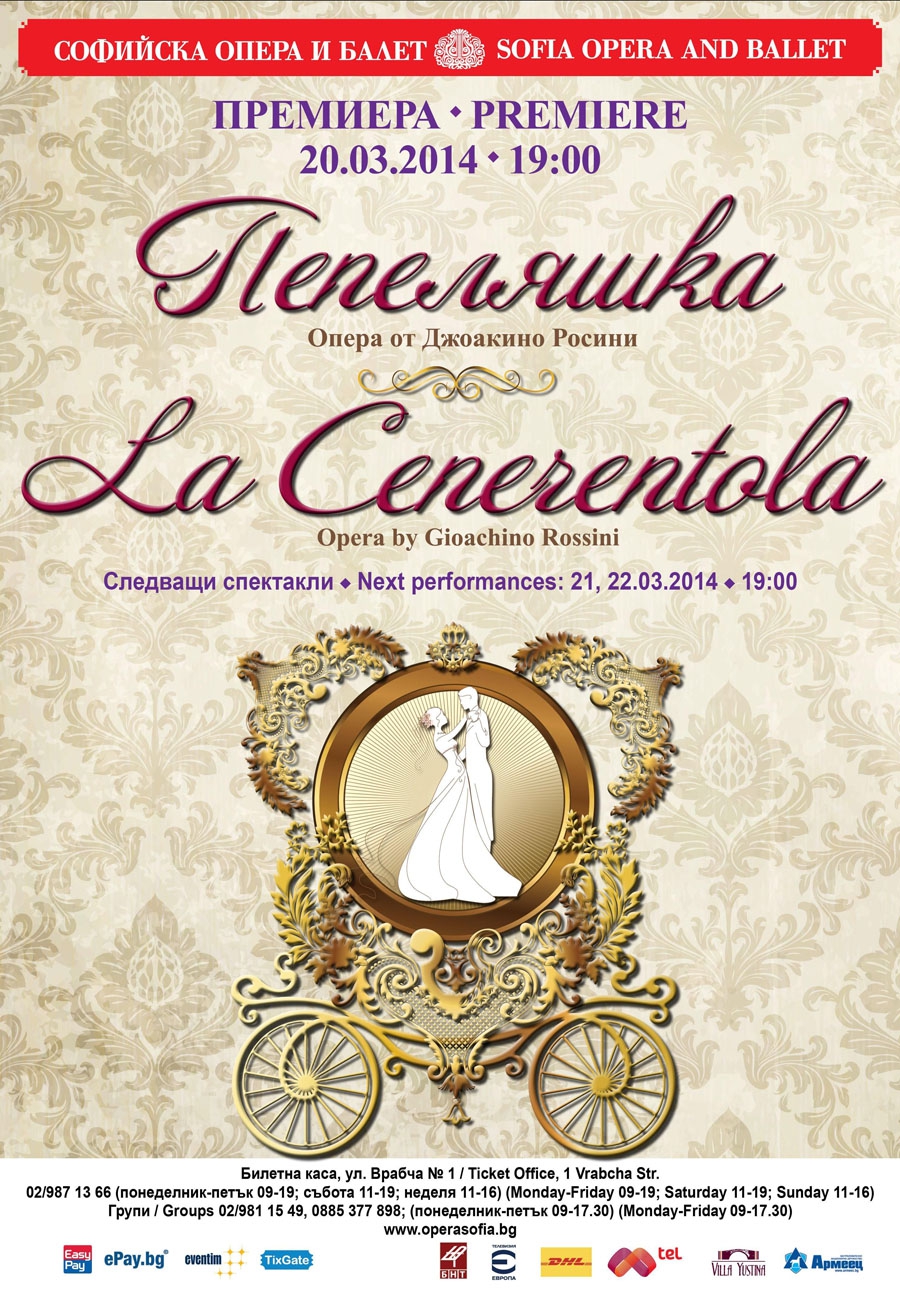“La Cenerentola, ossia La bontà in trionfo” (“Cinderella, or Goodness Triumphant”) is an operatic drama giocoso in two acts by Gioachino Rossini. The libretto was written by Jacopo Ferretti and was drawn on the fairy tale of the same name by Charles Perrault.
The opera’s first performance was on 25 January 1817 in “Teatro Valle” in Rome.
Rossini was 25 years old when he wrote “La Cenerentola”, but he had already behind him a succession of opera masterpieces as “Il barbiere di Siviglia”, “Tancredi”, “L’italiana in Algeri” and others.
The opera “La Cenerentola” is considered to be one of the finest writing for solo voice and ensemble. Because of the usual lack of time, method, terms and tempo of composing, the entire opera was completed in three weeks. For that reason Rossini uses in it the overture from “La gazzetta”, an opera buffo written several years before, as well as a part of an aria from “Il barbiere di Siviglia”. Some help Rossini received by Luca Agolini, who composed the “dry” recitatives, as well as three other extracts – of Alidoro, Clorinda and the chorus scene “Ah, della bella incognita”. Rossini changed and added different scenes and numbers in some cases on next productions, as these in 1818 and 1820.
The overture of the opera “La Cenerentola” has been often performed in concert programmes and is a part of the “standard” orchestra repertoire since its very composition, together with most of Rossini’s overtures.
The first performance was received with some hostility, but soon it gained great popularity in Italy and in other countries in Europe, among which Lisbon /1819/, London /1820/, New York /1826/. Practically, in the whole 19th century its popularity rivalled that of “Il barbiere di Siviglia”, but because of the exceptional vocal requirements and the difficulties in the contralto part, as it was originally written, it fell slowly out of the repertoire and became rare.
In the 60s of the 20th century Rossini’s music enjoyed a real renaissance. The new generation mezzo-sopranos and contraltos regained the popularity of “La Cenerentola” and it has been again on stage.
There were also some changes in the fairy tale itself, mainly because of Rossini’s choice for the visible realistic resolutions, and not for magic, as it is in the original, due to the obvious limitations and lack of “special effects” of his time.
In the last decades, there were made many recordings of the opera, and in the standard list of most performed operas it holds number 28 among several hundred titles of the active opera repertoire!
